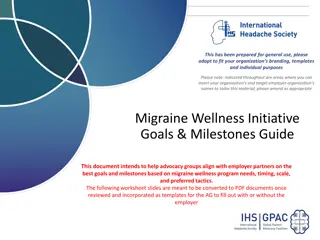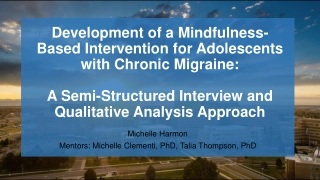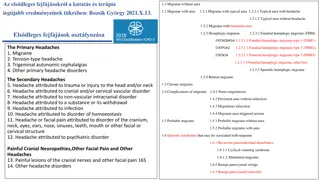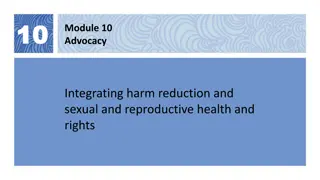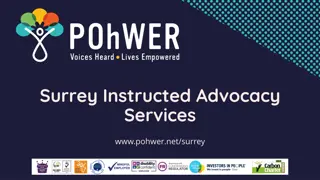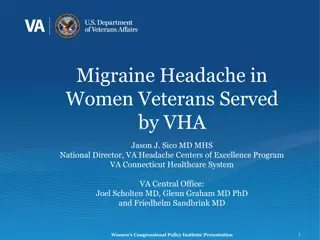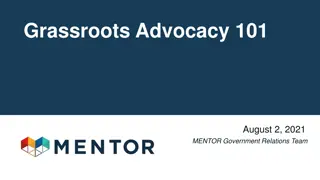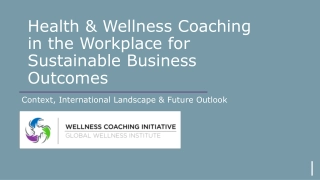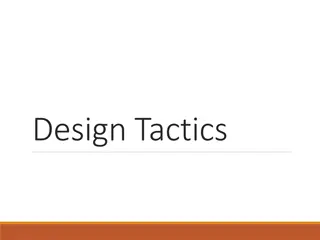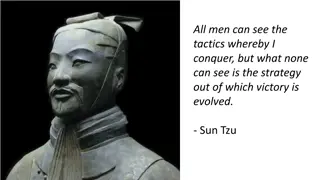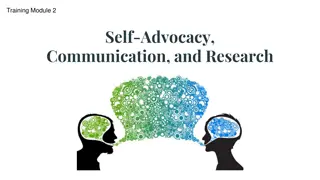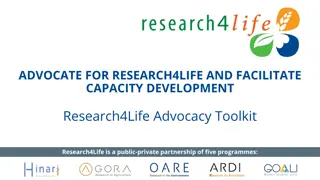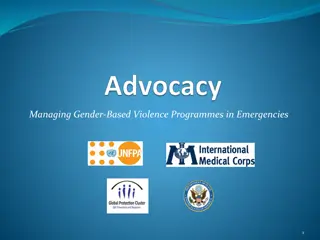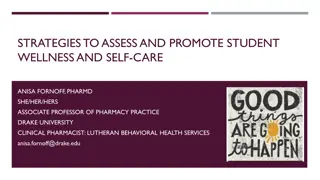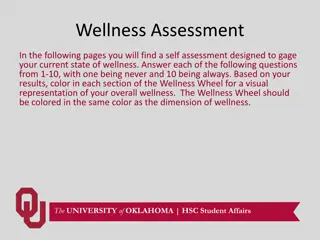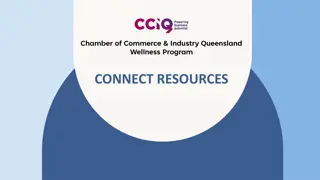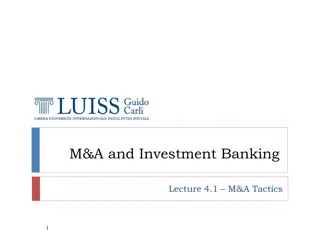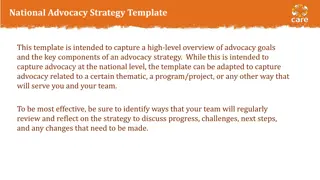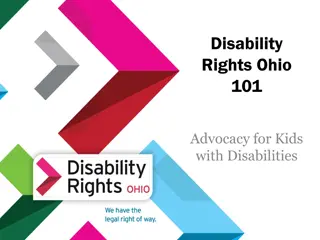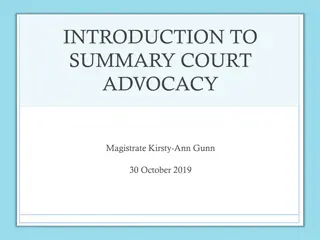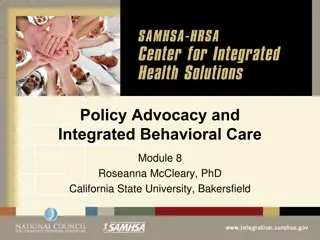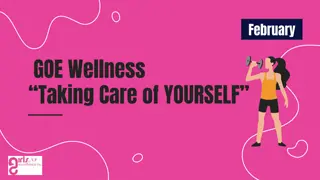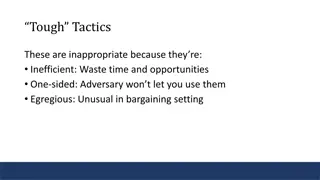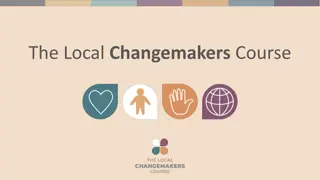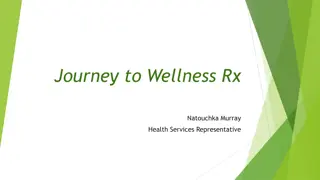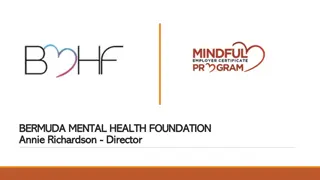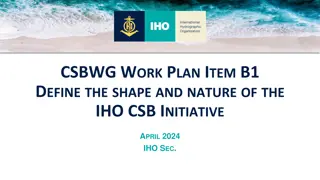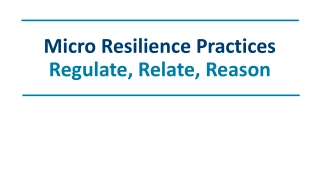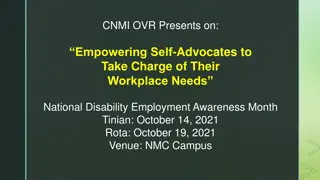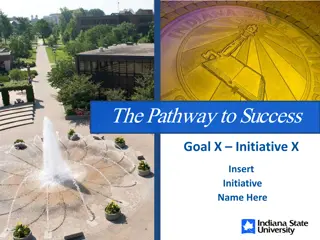Migraine Wellness Initiative Tactics for Workplace Advocacy
This document outlines a set of tactics for the Migraine Wellness Initiative to present to an employer partner. The focus is on raising awareness about migraines, reducing associated stigma, educating employees, and driving meaningful change in the workplace through engagement strategies and initiatives. The Employer Care Program emphasizes three key objectives to improve workplace productivity and employee well-being.
Download Presentation

Please find below an Image/Link to download the presentation.
The content on the website is provided AS IS for your information and personal use only. It may not be sold, licensed, or shared on other websites without obtaining consent from the author. Download presentation by click this link. If you encounter any issues during the download, it is possible that the publisher has removed the file from their server.
E N D
Presentation Transcript
IHS IHS- -GPAC GPAC Migraine friendly Migraine friendly Workplace Tactics Workplace Tactics This document intends to give the advocacy group a set of tactics for the Migraine Wellness Initiative to present to the employer partner
2 Employer Initiative Elements The IHS The IHS- -GPAC Employee Care Program is focused on three key objectives GPAC Employee Care Program is focused on three key objectives to drive meaningful change in the workplace to drive meaningful change in the workplace IHS IHS- -GPAC Employee Care Program Objectives GPAC Employee Care Program Objectives 2. Migraine Education 1. Migraine Awareness Increase awareness of migraine and reduce associated stigma amongst management and employees Provide education to all employees impacted by migraine to enhance their management of the disease Key Engagement Strategies to Achieve Our Objectives: Awareness Campaigns in the Workplace Migraine Assessment and Education Develop campaigns to heighten awareness of employees and stimulate correct migraine diagnosis Improve understanding of migraine amongst those living with the disease to drive better management of the disease and workplace productivity
3 The IHS The IHS- -GPAC Employee Care Program is focused on three key objectives GPAC Employee Care Program is focused on three key objectives to drive meaningful change in the workplace to drive meaningful change in the workplace IHS IHS- -GPAC Employee Care Program Tactics GPAC Employee Care Program Tactics Migraine Awareness Migraine Education These tactics could also be an add-on current employer s existing wellness programs Employer Champions may need to be selected to encourage employee participation and/or facilitate tactics to safeguard employee privacy Migraine Awareness Webinars 6 months campaign Migraine Impact Assessment Dissemination on month 1, reminder on 6 Increase awareness of migraine amongst all employees through a series of short and engaging webinars Leverage migraine and headache impact tool to enhance employees understanding of their condition and possible need for improved care Workplace Awareness Posters Bi-month display over 6 months Lunch and Learn / Migraine Caf 2 events during the program Encourage empathy of all employees with those affected by migraine through series of informational posters in the workplace Provide a forum and learning opportunities for employees to engage with senior management, patients and experts to discuss migraine The proposed tactics for each objective can be interchanged to include the most suitable components for each employer based on organization needs and feasibility
4 We propose focusing the workplace awareness poster on one focused We propose focusing the workplace awareness poster on one focused topic targeting topic targeting a a specific stakeholder group within the employer specific stakeholder group within the employer Proposed Content for Workplace Awareness Posters Proposed Content for Workplace Awareness Posters Option 1: Changing migraine stigma Target audience: general employees Option 2: Understanding your migraine Target audience: employees impacted by migraine Option 3: Migraine at work Target audience: all employees Impact in the workplace What does migraine look like through the eyes of migraineurs vs their colleagues? Impact of migraine on workplace dynamics How you can help Migraine triggers at work Tips on how to support your colleagues Key watchouts Foundational understanding Migraine background & evolution over time Comorbidities of migraine Migraine triggers Daily triggers Behavioral factors Signposting Treatment of migraine and associated comorbidities Tips on management Channels to get help What is migraine Migraine is more than a headache, but what is it? Migraine vs. e.g. TTH Stages of migraine & symptoms Migraine key facts and figures Global prevalence & estimated in the company Disease burden: impact and disability Migraine myths
5 A series of three 15 minute webinars targeting all employees can be used A series of three 15 minute webinars targeting all employees can be used to drive broader, in to drive broader, in- -depth awareness of migraine in the organization depth awareness of migraine in the organization Proposed Content for Awareness Webinars Proposed Content for Awareness Webinars 01 02 03 Overview of Migraine Migraine Triggers and Impact Holistic Migraine Management Migraine triggers (diet, lifestyle, environmental) What is migraine management? Definition of migraine Key facts about migraine: prevalence and disease impact Impact of migraine at work Acute and preventive treatment approach/options Webinar Content Tips on identification of triggers Impact in the workplace & common stigma Other migraine management options e.g. bio-behavioral treatments Action plan to manage & track triggers Migraine phases Physical and behavioral workplace adaptations to avoid triggers Migraine management in the workplace Migraine signs and symptoms Follow-up Migraine trigger and management checklist materials Employee guide to help make the most out of HCP visits Migraine impact assessment tool & user guidance Additional resources For Consideration: compulsory vs rewarded sessions for company employees
6 A migraine management checklist and assessment tool can be offered to A migraine management checklist and assessment tool can be offered to employees to drive education and action around migraine employees to drive education and action around migraine Proposed Content for Workplace Migraine Impact Assessment Proposed Content for Workplace Migraine Impact Assessment 2 1 1+2 Migraine Trigger & Management Checklist Headache Impact Tool (HIT-6) Target audience: Employees impacted by migraine Proposed Methods of Tactic Implementation Target audience: All employees Target audience: All employees Trigger Materials Assessment Objectives Soft Influence Identify potential migraine triggers in the work place Identify potential migraine triggers during the work day headaches on productivity Track headache history and therapy impact over time Determine impact of Send company-wide email to all with checklist and tool Include checklist and tool in webinar materials Make and distribute hard copies Assessment Structure Management Materials Hard Influence Provide recommendations to reduce migraine triggers Provide recommendations to manage migraine triggers a score ranging from 36-78 Results can be shared with physicians Consists of 6 questions with Incentivize HIT-6 assessment completion Require HIT-6 assessment completion by all employees
7 Lunch & Learn Sessions Lunch & Learn Sessions Example Lunch & Learn Panel Types and Session Focus Example Lunch & Learn Panel Types and Session Focus Potential Speakers Patient Advocates or Employer Champions Internal or External Patients Senior Leadership and HR Healthcare Professionals Potential Discussion Topics Option 1 Option 2 Overview of migraine and societal impact Migraine triggers, treatments, and management Migraine in the workplace today The impact of stigma around migraine Migraine advocacy globally and at your company Designing around migraine for a better tomorrow Speaker types suggested are dependent on the feasibility of securing an agreement based on local situations, and topics should be tailored based on the speaker s background and preferences



